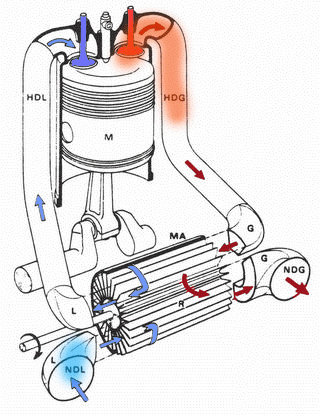Tommy Cookers wrote:@ J.A.W
looks rather 1939ish DKW
my local dealer had one on display, the company owned by Stan Hailwood (whose son Mike won 9 WCs)
DKW made these 'split single' (2 power piston/1 charging piston versions) like your photo, even 4 power piston versions
and a similar 4 power piston car engine till 1940
maybe there were military or industrial versions ?
btw that PC Vincent (of Vincent motorcycles) was active in radical 2 stroke design in the 70s - maybe there's patents around ?
the Harmonic Drive - what value is zero backlash in a vehicle transmission ?
I tried quite hard to use the thing 25 years ago, but it's only needed or valuable in about one in a thousand applications
there's always reasons why the conventional is the conventional (people with 'unique' products never have a useful range of product available)
I used a (custom) 5 kW Scott-wound transformer, a (c.o.t.s) precision ballscrew, 'AC' (synchronous) servo motor(/generator) and drive etc ....
total cost about $2000, and as a side effect, better energy recovery than current F1
about vibration - remember Mr Duckworth said the DFV had more vibrational force from the valves than from its flat crankshaft
presumably the rotary valves are better in this regard
and the 2 stroke with poppet or rotary valves can incorporate a balancing function into the valve drive
'TJI' techniques or not, the scope for lean running is quite small with liquid fuel, ie the boost will be lower than with gas fuel
we should always consider 'tuned' induction and exhaust functionality even with eg mechanical or electric supercharging
high boost ultra lean gas engines seem to use all their turbine power for supercharging ie have no recovery potential despite their use of backpressure
btw (NOTE TO SELF)
Manolis' view that the crossplane crank eg Yamaha is not lighter than the flat crank I now accept
my view otherwise was based on my 2004 idea that Yam's MotoGP was some odd '3 main bearing' style - having less web it would be lighter
remember the thousands of races won by Cosworth-FordUK pushrod 105E 3 main bearing engines turning 81 bore pistons up to 12000 rpm
If one were optimising engine losses then piston side thrust force would be the #1 issue to reduce, being the majority of fmep.
The dual counter rotating crank helps here, cancelling out the side thrust forces ( lateral reactive forces), reducing liner wear and gas blow by, helping oil longevity. Typically piston skirt friction is 0.1-0.6 bar from 1 to 6 krpm, or 50-60% of fmep at high rpm where fmep can exceed 2.3 bar at 15krpm.
The TJI does provide complete and fast combustion, with higher lambda's increasing the HA10,50 and 90 times and decreasing NOx by up to 99.7%. It will require a large increase in intake flow/reduced throttling losses. It also supports increasing compression ratio's 1-2 points.
The Gas fuels you are refering to is liquid petroleum gas? Due to the Polytropic index ?
High compression ratio's, generally prefer rotary valves, as knock is never observed.
Thermal barrier coatings on selected combustion surfaces could help, provided they have short thermal lag and durable.
High speed engines really need to have internal aerodynamic optimisation (3d cfd ?) same with oil churning losses.
I'm not convinced having essentially a small seperate combustion chamber as in the PatRoVa that opens up into the main combustion chamber as the piston descends from tdc, the partially burned gas (5-10% at most) will be expanding into a larger area, its the same compression volume moving into the same expanding main volume, but i'm sure the combustion will be effected differently as it has a different chamber shape and greater surface area, it will be forced to expand faster to fill the new volume, loosing heat, slowing combustion, and maybe even creating areas that won't reach combustion temperature, this was identified in the cfd combustion analyses (20krpm i think) on the Bishop RV engine and in those two exact spots there was carbon buildup occuring on the head surface, due according to the cfd data to excess squish velocity causing quenching, dealt with by studing squish behavior in this chamber and guidelines for optimising squish zones and spark plug location. Otherwise the engine will be very dirty emissions wise. Their is always a chance that as the gas is compressed into the compression volume and ignited, that the moles get over energised and just spin rather than bumping into one another which creates the kinetic energy/heat for combustion, if i've got my combustion physics right.








